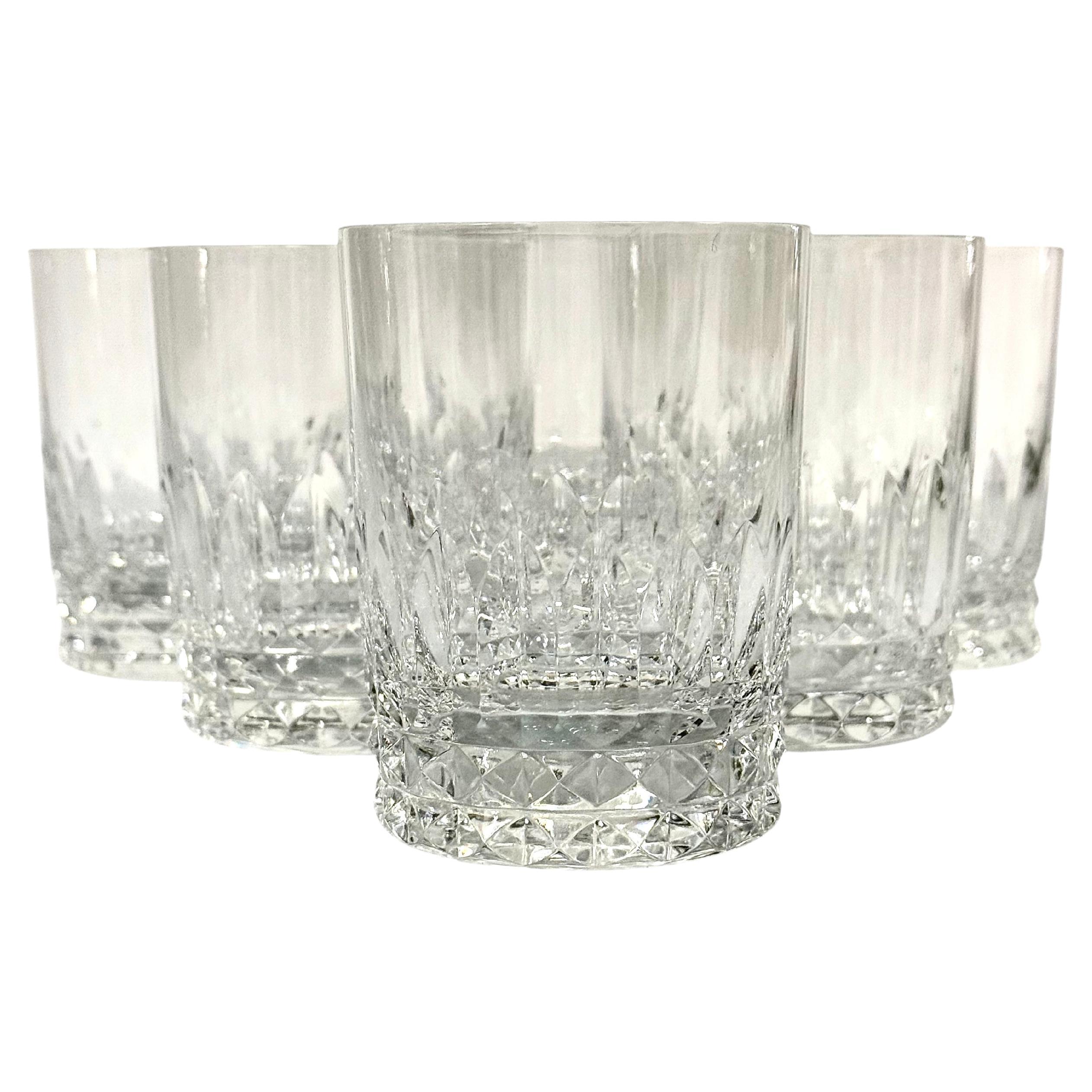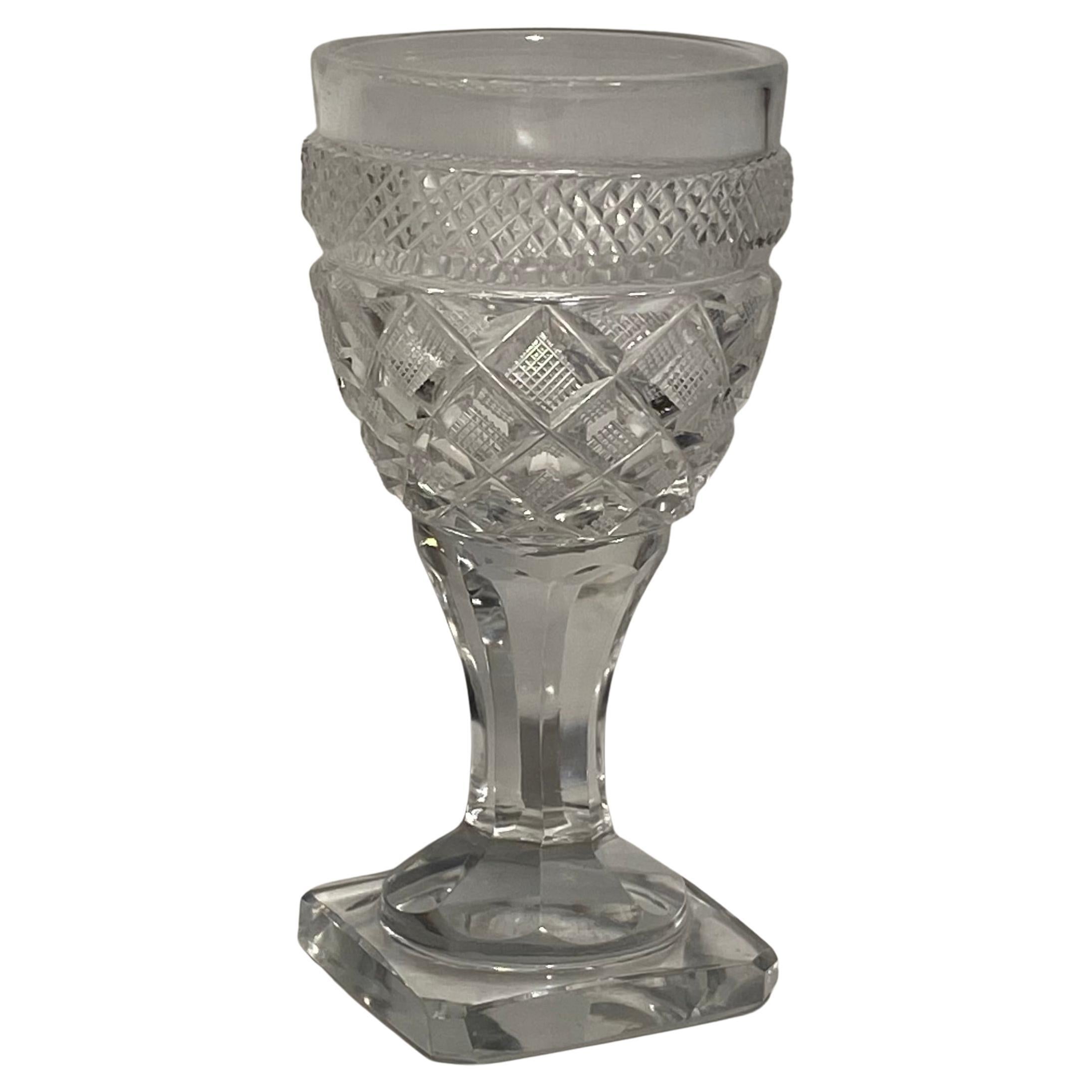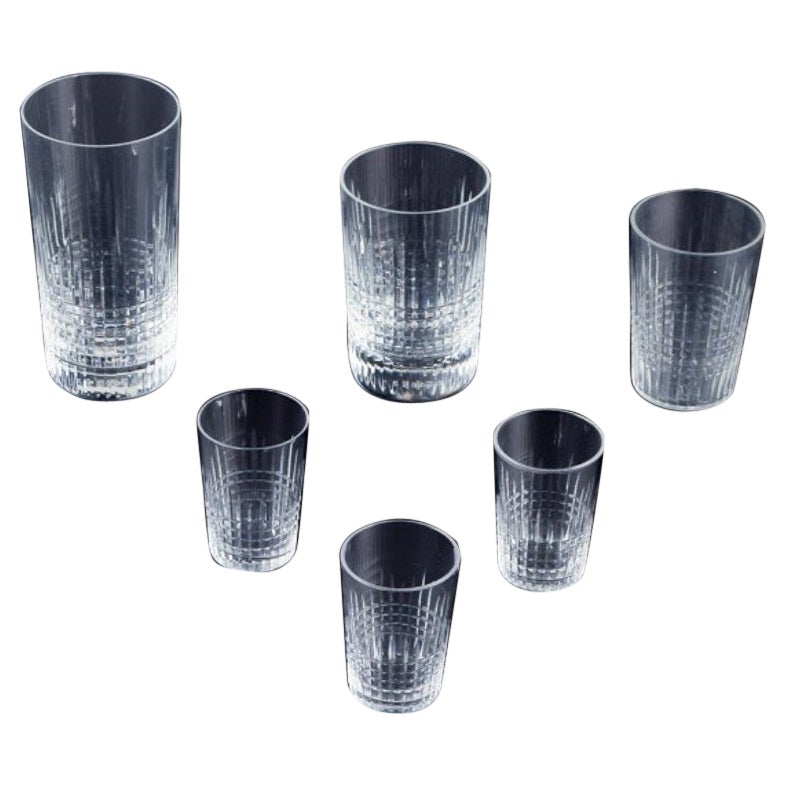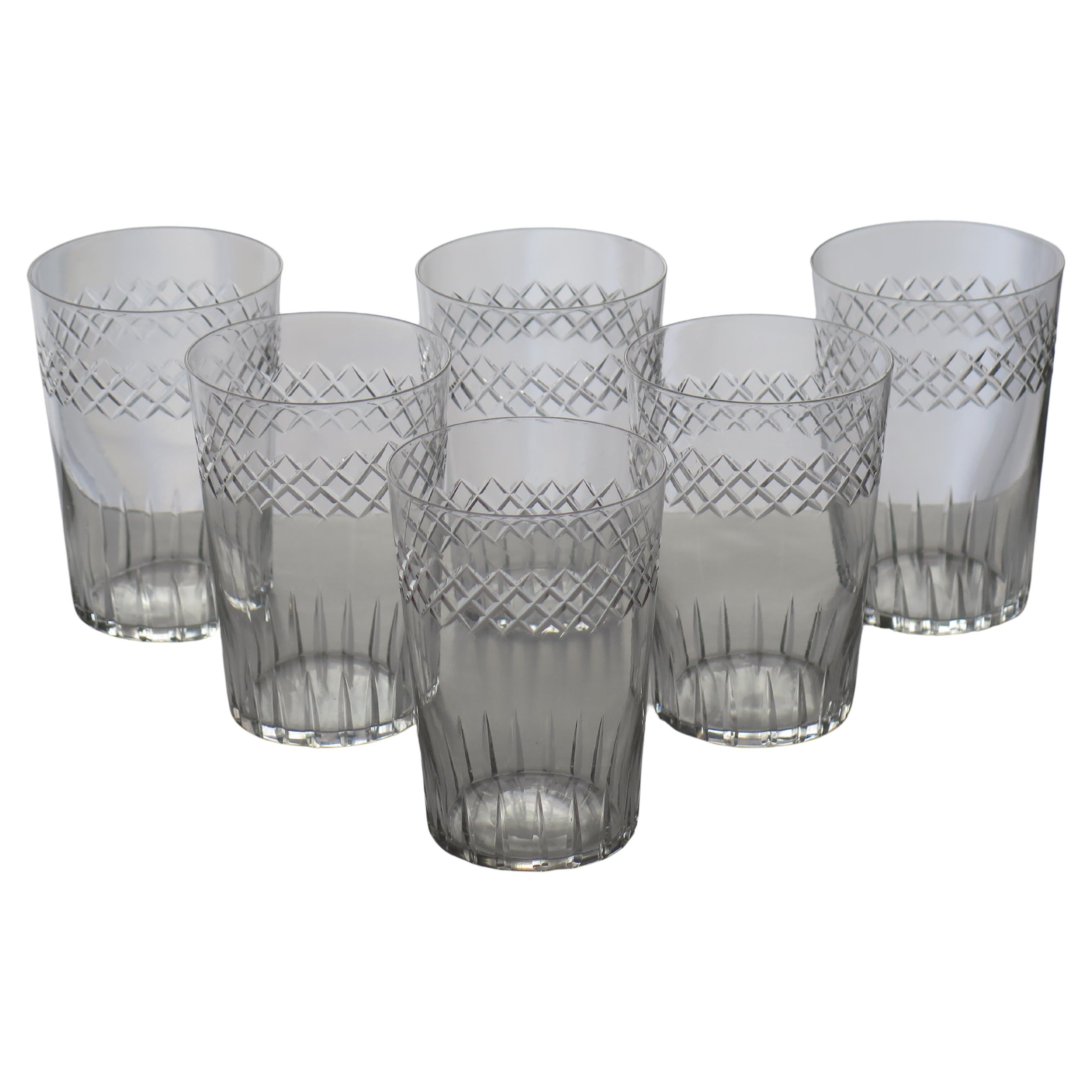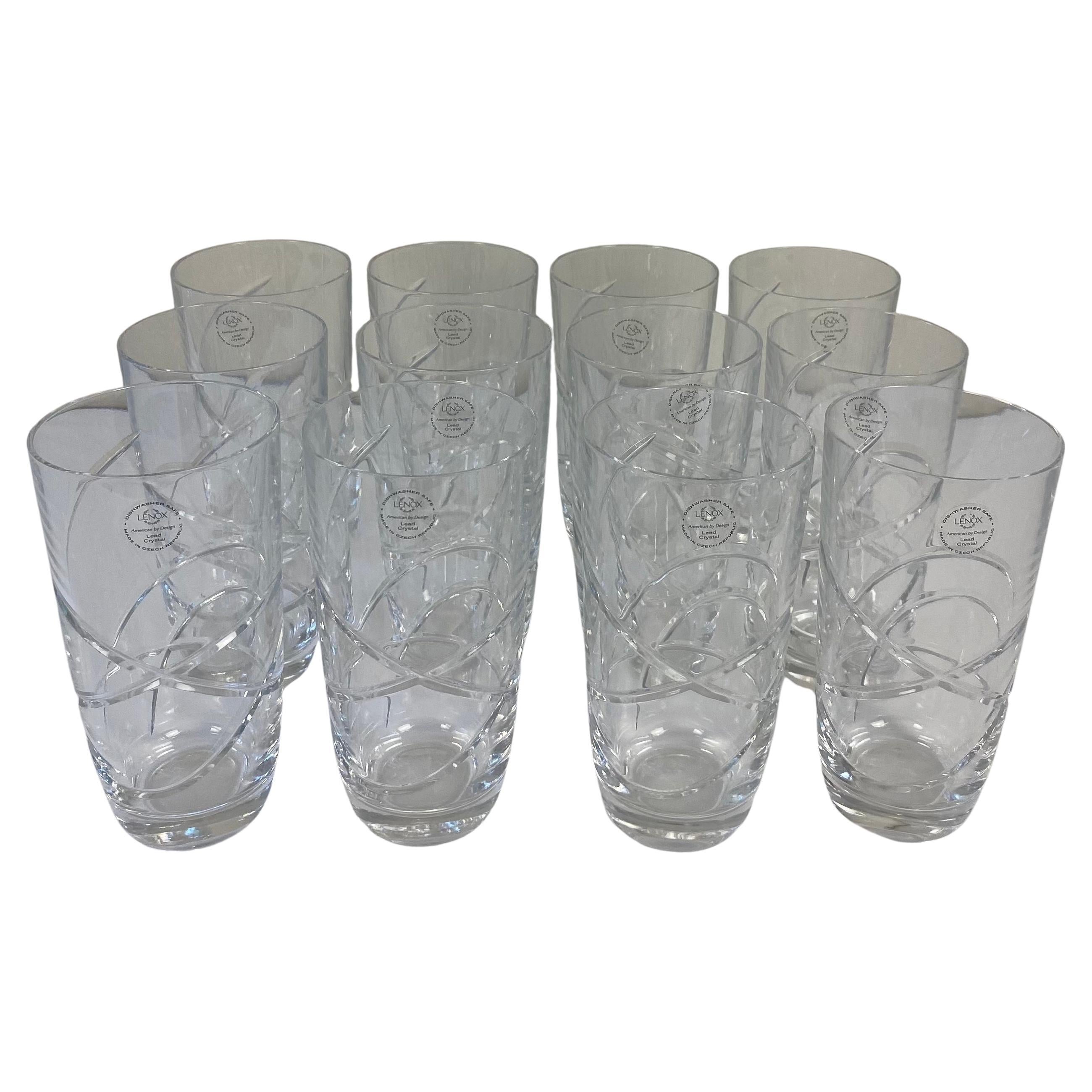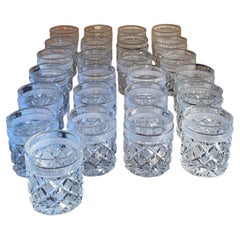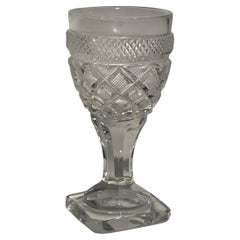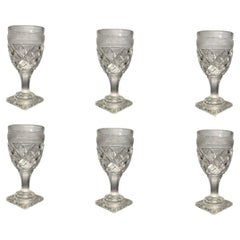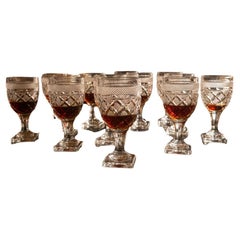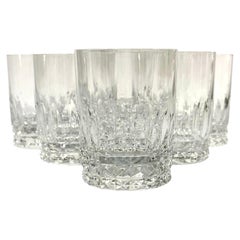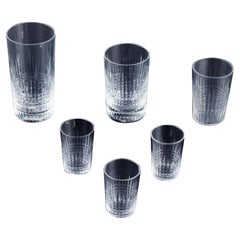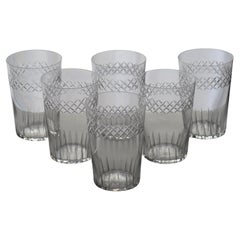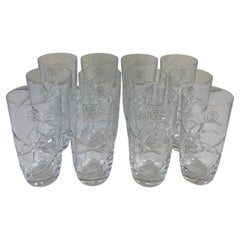Items Similar to Important Set of 7 Empire Baccarat Tumbler glasses, Sainte Anne in Voneche 1810.
Want more images or videos?
Request additional images or videos from the seller
1 of 17
Important Set of 7 Empire Baccarat Tumbler glasses, Sainte Anne in Voneche 1810.
$4,469.99per set
£3,397.94per set
€3,780per set
CA$6,281.90per set
A$6,830.67per set
CHF 3,599.10per set
MX$82,972.87per set
NOK 45,247.93per set
SEK 42,416.28per set
DKK 28,932.91per set
About the Item
Important 7 piece set of 1st Empire Cut-Glass Tumbler glasses from Sainte Anne crystal factory in Voneche, 1810 circa. Similar pieces are in fundus of the Louvre collection. "Gobelet cylindrique - Louvre site des collections"
The set provenance:
Collection Baron Charles Jean Maurice Lemonnier (12 January 1860 – 11 September 1930) a Belgian liberal politician and mayor of the City of Brussels.
The set provenance:
Collection Baron Charles Jean Maurice Lemonnier (12 January 1860 – 11 September 1930) a Belgian liberal politician and mayor of the City of Brussels.
Vonèche (Sainte Anne crystal factory in Vonèche, active from 1778 to 1830).
1.The beginnings of the glassmaking adventure in Vonêche date back to the end of the Ancien Régime, when promoter Pierre-Nicolas Mathys hired master blower Gaspard Andrès to install a glass factory. It was created on August 4, 1778, by virtue of a grant granted by the Empress Marie-Thérèse. Production began on December 10, 1779. The premature death of the craftsman and the inexperience of his successors led to the closure of the company in 1793.
On March 10, 1802, Aimé-Gabriel d'Artigues, a wealthy Parisian industrialist, bought the glass factory and transformed it into a crystal factory. He renovated and enlarged the facilities, and made Vonêche the largest crystal factory in the French Empire. The proximity of vast sandy bottoms and important forests, as well as the significant financial participation of Artigues in the lead mines of Aix-la-Chapelle, contribute to making the place a production center with control over the components necessary for the manufacture of crystal. The splendor of the Empire and the economic growth of the upper middle class provided a large clientele eager to purchase luxury items.
In 1810, between 600 and 700 workers worked there. But the fall of Napoleon four years later led to a loss of outlets and a drastic reduction in personnel. Integrated into the new kingdom of the Netherlands, the crystal factory lost the substantial French market. It was at this time that Aimé-Gabriel d'Artigues bought the crystal works of Baccarat, in French Lorraine, and transferred his activities there. However, he retains ownership of the premises. In 1826, the chemist François Kemlin and the engineer Auguste Lelièvre, collaborators of Artigues, left the company to go and found the crystal works of Val-Saint-Lambert. Vonêche closed its doors definitively in 1830.
Today, the quality of Vonêche's productions is still unanimously recognized. There are crystal works by Vonêche at the Louvre, in New York or in Asia. Closer to home, some beautiful pieces are kept at the Museum of Decorative Arts in Namur.
2. Although works of crystal made during this period were rarely marked, there is no doubt, given its great quality, that this drageoir was made by the Cristallerie de Vonêche(link is external) in Beauraing, one of the most prestigious crystal factories in Europe in the early 19th century.
In 1802, the industrialist Aimé-Gabriel d’Artigues(link is external) took over the Verreries Sainte-Anne de Vonêche, which had been founded in 1778. With his degree in chemistry, d’Artigues had already been experimenting in the production of pure lead crystal and, aware of the importance of science and technology working together, he made every effort to perfect the manufacture of crystal through laboratory research. Vonêche rapidly became the most important glassworks in the French Empire, attracting numerous families specialized in crystal making from Alsace and Lorraine.
By 1806, the fame of Vonêche was undisputed. In preparation for the French Trade Fair (l’Exposition générale et publique des produits de l’industrie française), d’Artigues submitted samples of his crystal for examination by members of the Consultative Committee for the Arts and Manufacture of Namur. Members of the committee confirmed that the crystal and the work done to create it were of the greatest beauty. The engraving was perfect, whilst the prices of the company’s crystal appeared to be very reasonable.
A few years later, a report by J.-B.X. Wasseige, a deputy of the Fabriques et Manufactures de la Province de Namur, dated 25 February 1816, pointed out that this crystal works was without doubt one of the finest in Europe; not only could it supply crystal for the domestic market, but it could also make considerable exports abroad. Despite the region becoming part of the United Kingdom of the Netherlands in 1815, d’Artigues made sure that his company could continue to supply his French clients by acquiring the Verrerie de Baccarat in Lorraine, through which he could import his crystal of Vonêche into France.
3. The beginnings of the glassmaking adventure in Vonêche date back to the end of the Ancien Régime, when promoter Pierre-Nicolas Mathys hired master blower Gaspard Andrès to install a glassworks created on August 4, 1778 by virtue of a grant granted by the Empress Marie-Thérèse and whose production began on December 10, 1779. The premature death of Andrès and the inexperience of his successors led to the closure of the company in 1793. On March 10, 1802, Aimé-Gabriel d'Artigues, rich Parisian industrialist, buys the glass factory and transforms it into a crystal factory. He renovated and extended the facilities and made Vonêche the most important crystal factory in the entire French Empire! The proximity of vast sandy bottoms and important forests, as well as the significant participation of Artigues in the lead mines of Aix-la-Chapelle contribute to making Vonêche a production center with control over the components necessary for the manufacture of crystal. The splendor of the Empire and the economic rise of the upper middle class enabled the crystal factories to have a large clientele eager to purchase luxury items. In 1810, between 600 and 700 workers worked there, but the fall of Napoleon led to a loss of outlets and a drastic reduction in staff (400 workers in 1816). Integrated into the kingdom of the Netherlands, the crystal factory lost the important outlet of the French market. Aimé-Gabriel d'Artigues then bought the Baccarat crystal works in Lorraine and transferred his activities there. In 1826, the chemist François Kemlin and the engineer Auguste Lelièvre, employees of Aimé-Gabriel d'Artigues, left the company to go and found the crystal works of Val-Saint-Lambert in Seraing. The activities ceased definitively in Vonêche in 1830. The owner remained the only inhabitant of the place and resided in his very beautiful castle 1, built at the height of his glory.
In 1802, the old vonêchoise glassworks was developed by Aimé-Gabriel d’Artigues, from the glassworks that had existed there since 1778. Although it was a real success and had more than 650 workers, nothing remains of it today. Nevertheless, it is interesting to know that those who created the old vonêchoise glassworks were the ones who developed it in 1802, from the glassworks that had existed there since 1778, by Aimé-Gabriel d’Artigues. Although it was a real success and had more than 650 workers, nothing remains of it today. Nevertheless, it is interesting to know that those who created, in 1826, the famous Liège crystal factory of Val Saint-Lambert were none other than Kemlin and Lelièvre, former directors at Vonêche.
- Creator:Voneche (Manufacturer)
- Dimensions:Height: 3.35 in (8.5 cm)Diameter: 2.76 in (7 cm)
- Sold As:Set of 7
- Style:Empire (Of the Period)
- Materials and Techniques:
- Place of Origin:
- Period:
- Date of Manufacture:1810 circa
- Condition:Wear consistent with age and use. For the glass pieces made on the turn of the 18 to 19th century the condition is very good no chips or cracks present.
- Seller Location:Trieste, IT
- Reference Number:1stDibs: LU10622247260002
About the Seller
New to 1stDibs
Joined in the past six months.
No Reviews Yet
Vetted Professional Seller
Every seller passes strict standards for authenticity and reliability
1stDibs seller since 2025
- ShippingRetrieving quote...Shipping from: Trieste, Italy
- Return Policy
Authenticity Guarantee
In the unlikely event there’s an issue with an item’s authenticity, contact us within 1 year for a full refund. DetailsMoney-Back Guarantee
If your item is not as described, is damaged in transit, or does not arrive, contact us within 7 days for a full refund. Details24-Hour Cancellation
You have a 24-hour grace period in which to reconsider your purchase, with no questions asked.Vetted Professional Sellers
Our world-class sellers must adhere to strict standards for service and quality, maintaining the integrity of our listings.Price-Match Guarantee
If you find that a seller listed the same item for a lower price elsewhere, we’ll match it.Trusted Global Delivery
Our best-in-class carrier network provides specialized shipping options worldwide, including custom delivery.More From This Seller
View AllLarge Set of 25 Antique Baccarat Tumbler glasses from Sainte Anne, Voneche 1810.
By Voneche
Located in Trieste, IT
Important 33 piece set of 1st Empire Cut-Glass Tumbler glasses from Sainte Anne crystal factory in Voneche, 1810 circa. Similar pieces are in fundus of the Louvre collection. "Gobele...
Category
Antique 1810s Belgian Empire Glass
Materials
Blown Glass, Cut Glass
Ten Antique Baccarat Port Wine Glasses by St. Anne Factory, Voneche, 1810.
By Voneche
Located in Trieste, IT
Important 10 piece set of 1st Empire Port wine Cut-Glass goblets from Sainte Anne crystal factory in Voneche, 1800 - 1830 cca.
The set provenance:
Collection Baron Charles Jean Mau...
Category
Antique 1810s Belgian Empire Glass
Materials
Blown Glass, Cut Glass
Antique Baccarat Set of 6 Wine Glasses from Sainte Anne Factory, Voneche, 1810.
By Voneche
Located in Trieste, IT
Important 12 glasses set of 1st Empire wine Cut-Glass goblets from Sainte Anne crystal factory in Voneche, 1800 - 1830 cca.
The set provenance:
Collection Baron Charles Jean Mauric...
Category
Antique 1810s Belgian Empire Glass
Materials
Blown Glass, Cut Glass
Antique Baccarat Set of 12 Port Wine Glasses by St. Anne Factory, Voneche, 1810.
By Voneche
Located in Trieste, IT
Important 12 glasses set of 1st Empire wine Cut-Glass goblets from Sainte Anne crystal factory in Voneche, 1800 - 1830 cca.
The set provenance:
Collection Baron Charles Jean Mauric...
Category
Antique 1810s Belgian Empire Glass
Materials
Blown Glass, Cut Glass
Antique Baccarat Set of 12 Wine Glasses from Sainte Anne Factory, Voneche, 1810.
By Voneche
Located in Trieste, IT
Important 12 glasses set of 1st Empire wine Cut-Glass goblets from Sainte Anne crystal factory in Voneche, 1800 - 1830 cca.
The set provenance:
Collection Baron Charles Jean Mauric...
Category
Antique 1810s Belgian Empire Glass
Materials
Blown Glass, Cut Glass
Antique Baccarat Champagne Flutes from Sainte Anne factory in Voneche, 1810 cca.
By Voneche
Located in Trieste, IT
Important 33 piece set of 1st Empire Champagne Cut-Glass Flutes from Sainte Anne crystal factory in Voneche, 1800 - 1830 cca.
The set provenance:
Collection Baron Charles Jean Mauri...
Category
Antique 1810s Belgian Empire Glass
Materials
Blown Glass, Cut Glass
You May Also Like
Set of Six Baccarat “Harmonie” Crystal Tumblers
By Baccarat
Located in LA CIOTAT, FR
This exquisite set of six crystal tumblers is from the iconic “Harmonie” collection by Baccarat, one of the most prestigious French crystal manufacturers. Each glass is signed “Baccarat France” on the base, confirming its authenticity and heritage.
The “Harmonie” line is celebrated for its timeless elegance and masterful craftsmanship. These tumblers feature a clean, cylindrical silhouette adorned with deep vertical cuts that catch and reflect the light beautifully. The weighted base is intricately cut in a crosshatch pattern, adding balance, sparkle, and a luxurious feel in the hand. Both modern and classic, this design complements any style of tableware, from contemporary to traditional.
Perfect for serving whiskey, cocktails, or even water in style, these glasses elevate any occasion with their refined brilliance. The exceptional clarity of Baccarat crystal and the precision of the cuts make these pieces both functional and decorative.
This matching set is in excellent condition, with no chips or cracks, and showcases the enduring quality of fine French crystal. Whether for everyday indulgence or formal entertaining, these Baccarat tumblers...
Category
20th Century French Glass
Materials
Crystal
$1,960 / set
Baccarat, France. Set of six "Nancy" assorted drink glasses in crystal glass
Located in København, Copenhagen
Baccarat, France. A set of six "Nancy" assorted drink glasses in clear crystal glass.
Approximately 1930.
In perfect condition.
The two largest glasses are marked.
Largest: H 13.8 cm...
Category
Vintage 1930s French Glass
Materials
Crystal
Set of SIX Edwardian Glass Tumblers Engraved Drinking Glasses, circa 1905
Located in Lincoln, Lincolnshire
These are a good set of six crystal glass, engraved tumblers or drinking glasses, dating to the Edwardian period, circa 1905
Each glass tumbler has...
Category
Early 20th Century English Edwardian Barware
Materials
Glass
Set of 12 Cut Crystal Water Glasses by Lenox
Located in Miami, FL
A fine high quality vintage set of 12 cut crystal water glasses by Lenox.
American design made in the Czech Republic.
Very good condition, m...
Category
20th Century Czech Hollywood Regency Barware
Materials
Crystal
$960 Sale Price / set
20% Off
Baccarat, France, Seven Tallyrand Glasses in Clear Mouth-Blown Crystal Glass
Located in København, Copenhagen
Baccarat, France. Seven Tallyrand glasses in clear mouth-blown crystal glass. Mid-20th century.
Measures: 8 x 7 cm.
In perfect condition.
Stamped.
Category
Mid-20th Century French Glass
Materials
Crystal
Set of Nine Mismatched Saint Louis Crystal Highball Glasses
By Saint Louis
Located in LA CIOTAT, FR
A sparkling set of nine mismatched highball glasses in Saint-Louis crystal. Five of the glasses are from the 'Bidassoa' series, prized for its languid, diagonal slashes that encircle...
Category
20th Century French Glass
Materials
Crystal

